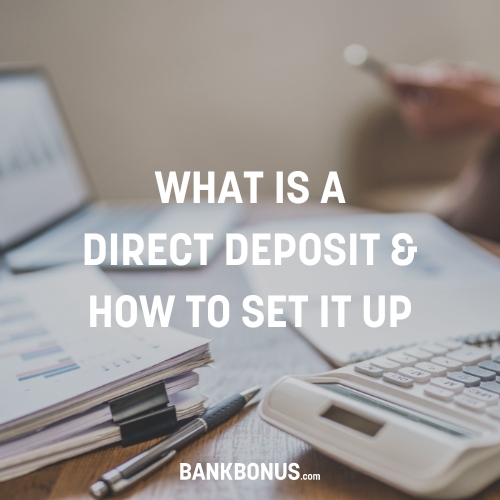Whether it’s for your own personal finance or business finance, interest is one of the most important topics.
It represents the entire model on which banking is built and how you can make money and spend it.
There are different types of interest that both savers and spenders should know.
What Is Interest?
Simply put, interest is what someone pays to borrow money. If you’re taking out a loan – e.g., a mortgage, personal loan, or auto loan – as the borrower, you’ll pay interest on top of the money borrowed (principal amount) as a payment for the service.
If you are depositing money in an interest-bearing account, like a CD or a high-yield savings account, with a bank or credit union as the lender, you’ll earn interest.
That’s because you are essentially allowing this financial institution to borrow your money.
Because of how it works, it is often seen as the cost of debt – what it costs someone to borrow money from a lender. As we said earlier, a sum that is borrowed earns money through interest.
It is always worked out as a percentage of the capital (the sum borrowed) over one year. To use a very simplified example – a 6% rate means that 6% of the outstanding capital is due every year until that sum is paid in full.
Now, how that percentage cost is worked out can take on various forms, and while it might sound complicated, in reality, it is not.
Essentially, you need to worry about two things when it comes to interest – how is it worked out, and does it change?
Knowing the answer to these two questions can help you to better prepare for the future regardless of whether you’re borrowing money or lending money to someone else.
Learn More:
Why Are Interest Rates Important?
Interest rates are important for a few reasons.
Suppose you have a credit card, student loans, a 30-year mortgage, or any other type of loan. In that case, it will affect the total amount of interest payments you’re going to have to make on top of your monthly payment.
You can see the interest charges as your cost of borrowing money. On the other hand, if you have a savings account such as a CD or high-yield savings account, a lower rate will affect how much more money your money can generate for you.
Because of this, it is always better to seek high-interest rates when lending out or to deposit money and low rates when you’re the one doing the borrowing.
Here, it’s important to spend extra time looking for the most favorable mortgage rates since these tend to span a considerable number of years.
You should also seek longer terms in the same vein when you’re lending out the money and shorter terms when you’re the one borrowing the money.
This way, you limit the interest that you have to pay while increasing the amount of money you can make.
Simple Interest vs. Compound Interest
One of the major topics that you’ll see popping up time and again is simple and compound. If you’ve never come across these two terms, you might have come across their monikers – APR and APY.
APR stands for Annual Percentage Rate while APY stands for Annual Percentage Yield.
They might sound similar, but there is one big difference in how they work.
Understanding this difference can help you determine how much money you will have to pay back or makeover a time period.
We will tackle these two scenarios one by one, including the relevant interest calculations to give you a better idea of how they work.
Simple
Simple interest, as the name implies, is the simpler form. It is always expressed as a percentage, with the percentage being tied to the sum of the borrowed money.
The formula for working out simple interest is quite simple, as it turns out:
- Principal x Rate x Time
To use an example, let’s say that you borrow $30,000 to buy a car at 6% interest payable over 5 years. Using the formula above, we can work out the interest as follows:
- 30,000 x .06 x 5
This will give us the sum of $9,000.
At 6% simple interest over five years, the total payable interest will amount to $9,000. In total, you will owe $39,000.
You might have noticed that we wrote the 6% rate as 0.06 in the formula. That’s because we are expressing it as part of a 100. Another example: 30% would have been expressed as 0.30.
Compound
Compound interest uses a slightly more complex formula, and this is because it works in a slightly more complicated way.
Compound interest takes any interest earned up until that point (or accrued interest) as part of the capital. That leads to increasingly higher returns as more interest is accumulated on the capital sum.
Let us use an example to illustrate this. You go to the bank and open a CD (Certificate of Deposit) for five years at a rate of 2%, and you deposit $10,000.
One thing that you will always see accompanying APY rates is the compounding period.
This period is important as it tells us how often the interest is worked out.
Available options here include:
- Daily
- Weekly
- Monthly
- Quarterly
- Yearly
In the majority of the cases, it will be daily. Daily is the best compounding period, while yearly is the worst since the more compounding periods we have, the more interest is included with the capital when compounding.
The formula for working out the real interest rate of a given APY rate is as follows:
- APY = (1 + interest rate / compounding periods)compounding periods – 1
Using the example above, an APY rate of 2% for a 5-year term CD that compounds daily, by the maturity date, we will have $11,051.68.
To make a direct comparison with the APR rate above, if we were to deposit $30,000 in a 5-year CD that offers 6% APY by the maturity date, we would have made – $40,494.75.
As you can see, all things being equal, an APR would generate $9,000 in interest, and an APY would generate close to $10,500. That is the power of compounding.
If it all gets a bit too mathematical, there are many free interest calculators online that can work out the payable interest for you.
Fixed Interest vs. Variable Interest
Regardless of whether it is simple or compounded, it can be fixed or variable. Fixed interest stays fixed for the term’s entire duration, while variable can go up or down during the term.
When a bank or any other financial institution issues a rate, it is not pulling that rate out of thin air. Instead, it is basing it off the Federal Reserve’s rate, which is issued every day.
When you take out a loan or open a CD, the financial institution may give you the option of choosing between a fixed rate or a variable rate.
A fixed-rate represents security as you will know what you owe (down to the last cent). On the other hand, you may lose on potential savings should the rate go down.
The opposite is true when choosing a variable rate. You do not have the security of knowing how much you’re actually going to pay but may save some money or end up paying more.
What Determines The Interest Rate?
Several factors determine the amount of interest you end up paying. For the most part, these factors are outside of your control. However, some are within your power to a certain extent.
Things outside of your control include:
- Economic policy and activity
- Inflation rate
- Rate of unemployment
These factors determine the rate that the Federal Reserve or central bank issues.
On the other hand, your credit score can prove to affect the interest rate offered to you when it comes to certain financial products as services such as a mortgage.
The lower your credit score, the riskier you are perceived to be, and as such, the higher the rate you’ll have to pay to make good for that risk. Higher credit scores represent less risk and, as such, may receive more favorable rates.
Understanding this can help you avoid borrowing money during periods of higher rates, thereby minimizing your repayment plan’s annual interest.
Frequently Asked Questions
What does interest mean?
It is the cost of borrowing money. It is expressed in decimal format as a percentage of the sum that is borrowed. If you’re depositing money in a savings account, the interest works in your favor. It tells you how much money you’ll receive. On the other hand, if you’re borrowing money, it is a cost to you. You’ll have to pay this money on top of the principal sum – the amount of money you originally borrowed.
What is interest in simple words?
In simple words, interest is what a borrower pays the lender for borrowing the money. You can work it out in various ways, so it’s always essential to understand the terms and conditions accompanying the rate being offered (whether you’re borrowing money or lending out your money).
What is it, and how does it work?
Simply put, it is what it costs to borrow money. If you’re borrowing money (e.g., taking out a loan or using a credit card), the interest rate is what you’ll have to pay back on top of the money borrowed.
If you’re lending out your money (e.g., opening a CD or a savings account), the interest rate is what the bank or credit union will pay you. The rate is always shown as a percentage of the principal sum (the amount of money being lent out). That percentage rate is per year so the longer the money is borrowed, the more the borrower has to pay back.





Comments are closed.
Comments are closed here.